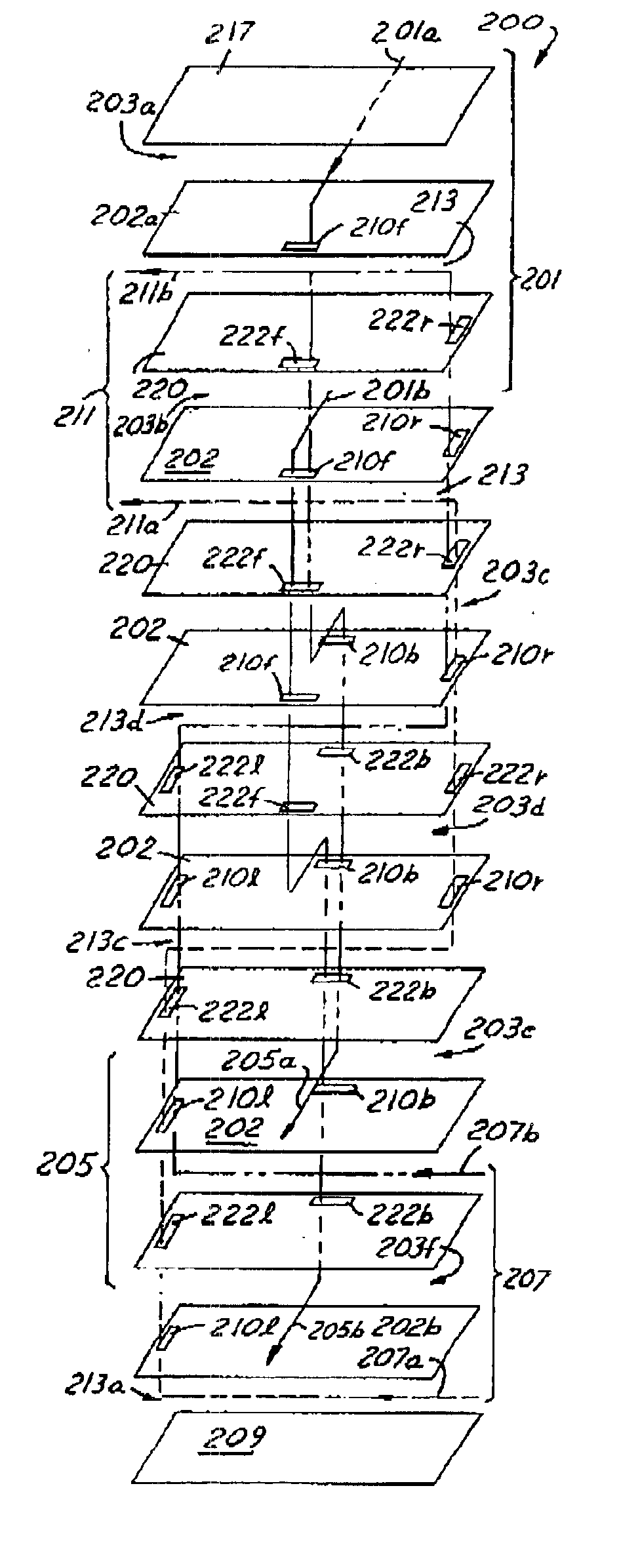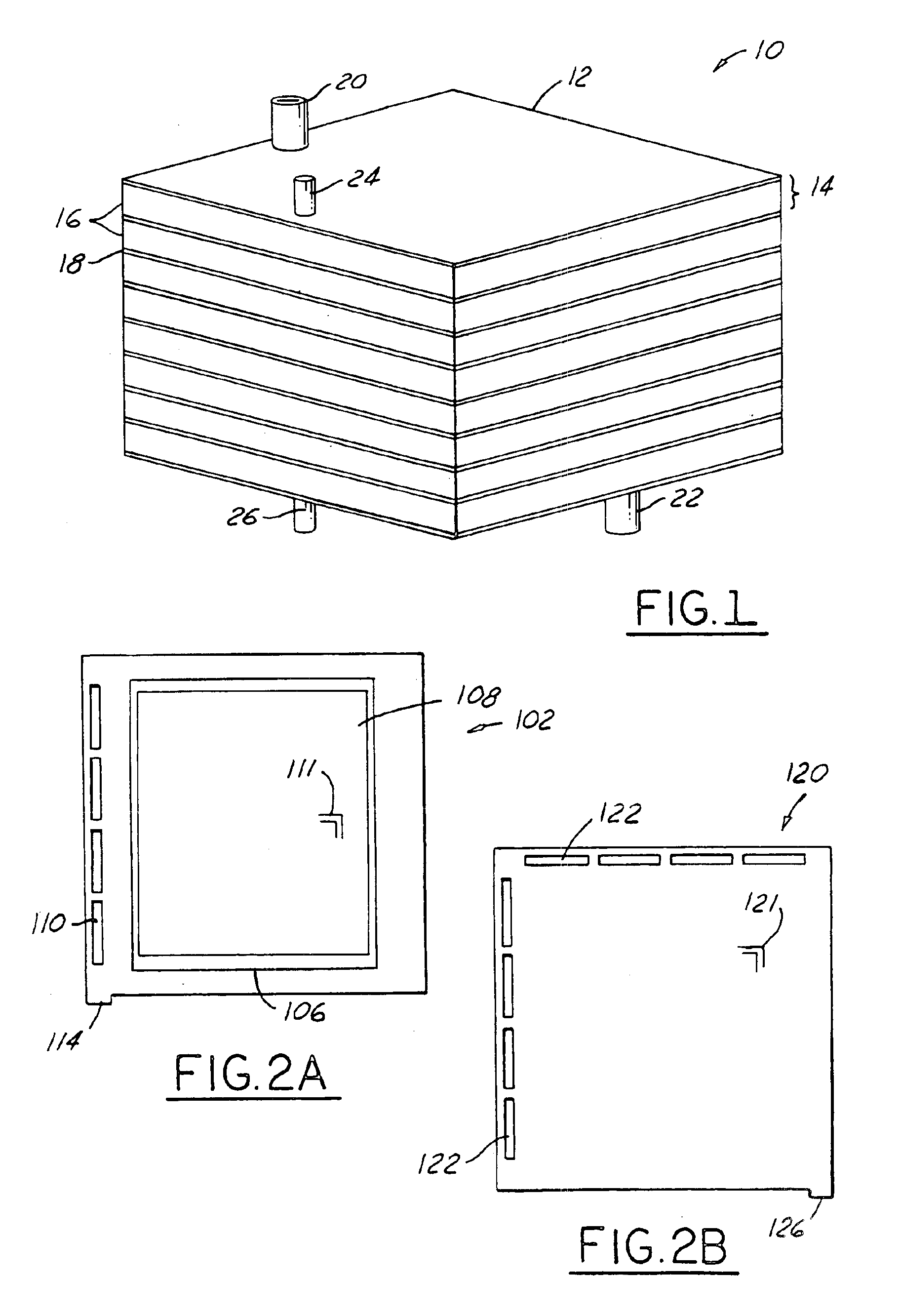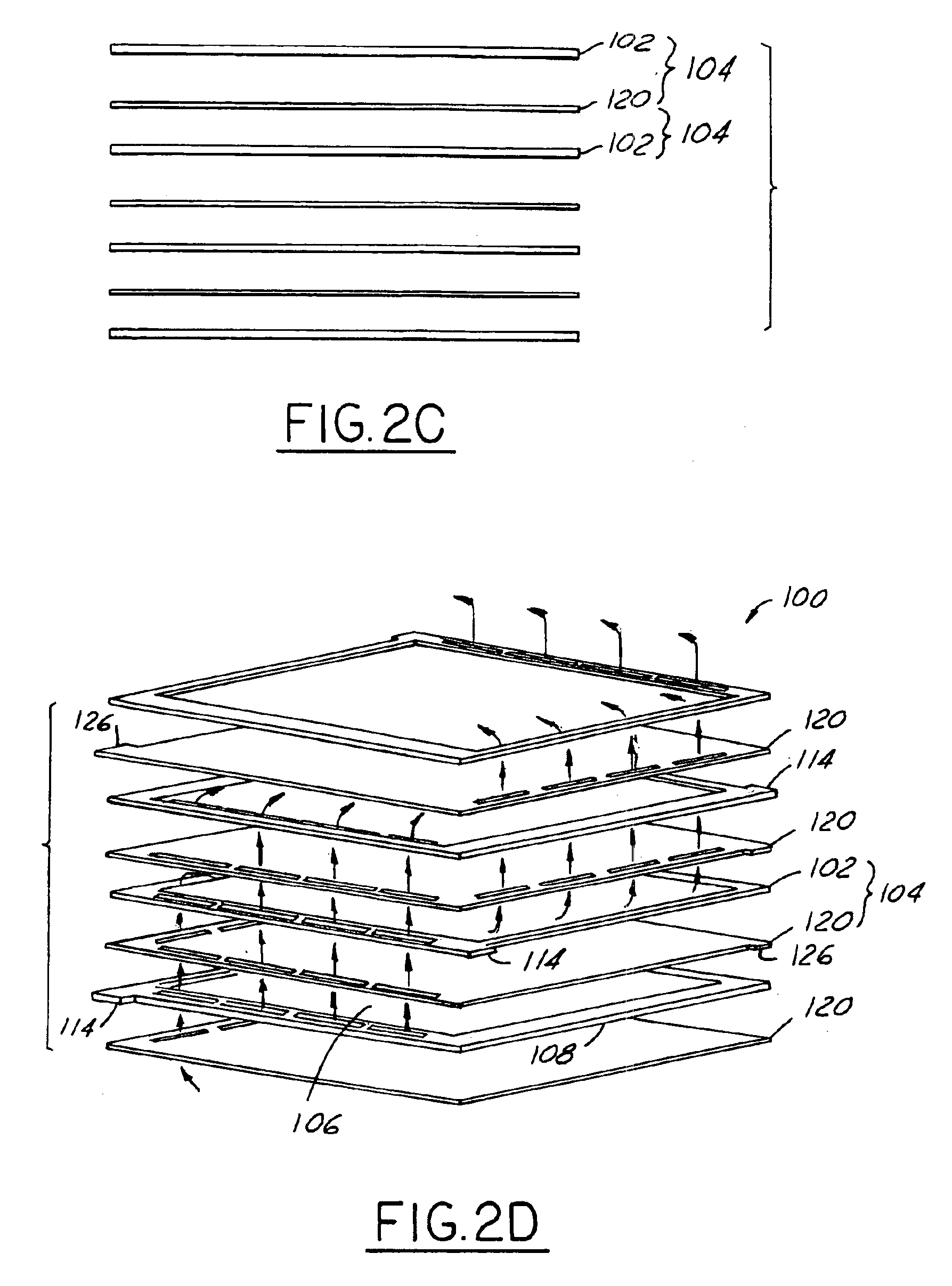Plate-frame heat exchange reactor with serial cross-flow geometry
- Summary
- Abstract
- Description
- Claims
- Application Information
AI Technical Summary
Benefits of technology
Problems solved by technology
Method used
Image
Examples
Embodiment Construction
)
[0021]Referring now to FIG. 1, a fuel processing assembly 10 which forms a portion of a typical fuel cell power plant is depicted. The assembly 10 includes a plate frame heat exchange reformer 12 for converting hydrocarbon fuels into hydrogen that is used by electrochemical fuel cells (not shown) to generate electricity. The reformer 12 is primarily comprised of a series of stacked cells 14. Each stacked cell 14 is comprised of a header sheet 16 and an interleaved sheet 18. The reformer 12 has an intake port 20 for receiving feed gas, typically gasoline, natural gas, or some other type of hydrocarbon, from a reservoir (not shown) and an outlet port 22 for removing the heated reformed feed gas from the reformer 12. The feed gas may also comprise any combination of water, oxygen, nitrogen, carbon monoxide, carbon dioxide, hydrogen, and partially reacted fuel. The reformer 12 has a burner inlet port 24 for receiving heated burner exhaust gas and / or a partially or wholly unreacted mixt...
PUM
| Property | Measurement | Unit |
|---|---|---|
| Time | aaaaa | aaaaa |
| Flow rate | aaaaa | aaaaa |
| Size | aaaaa | aaaaa |
Abstract
Description
Claims
Application Information
 Login to View More
Login to View More - R&D
- Intellectual Property
- Life Sciences
- Materials
- Tech Scout
- Unparalleled Data Quality
- Higher Quality Content
- 60% Fewer Hallucinations
Browse by: Latest US Patents, China's latest patents, Technical Efficacy Thesaurus, Application Domain, Technology Topic, Popular Technical Reports.
© 2025 PatSnap. All rights reserved.Legal|Privacy policy|Modern Slavery Act Transparency Statement|Sitemap|About US| Contact US: help@patsnap.com



